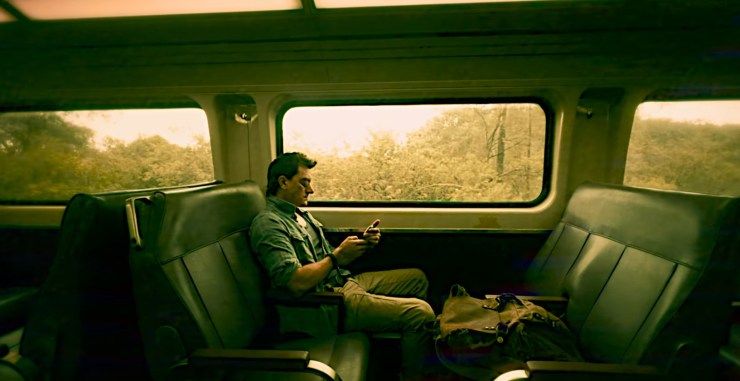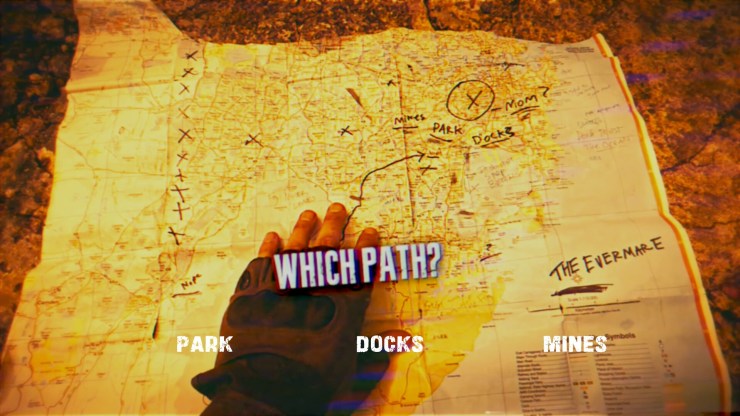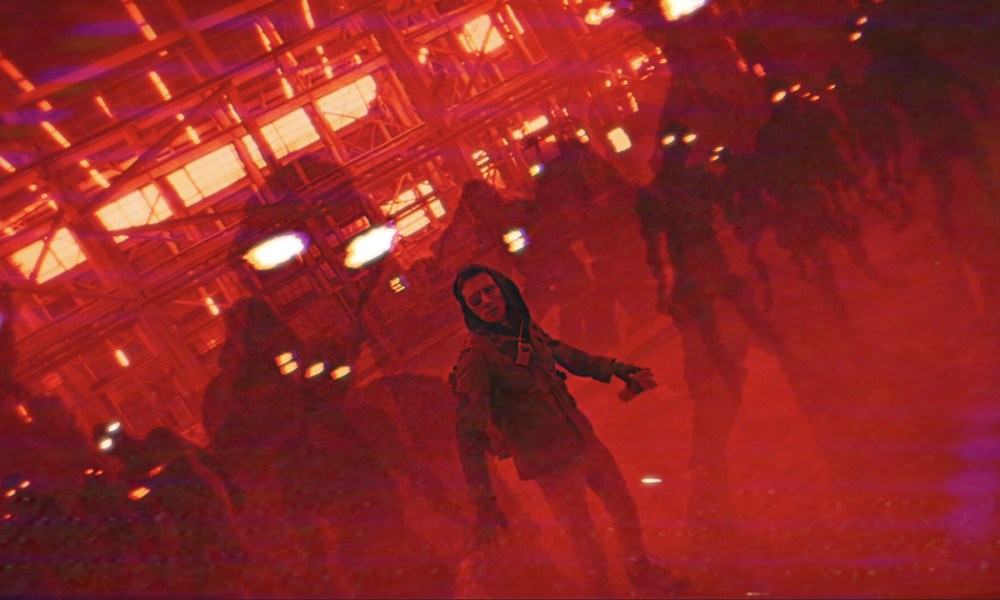The re-popularization of FMV games and choose-your-own adventure movies is one of my favorite trends from the past few years. After all, modern technology has made it much easier for these interactive projects to finally fulfill their promises of placing you inside the narrative without relying on the compressed video files and laughable production budgets that used to plague the genre in the past.
Among the recent wave of multiple-choice blasts from the past, one of the most interesting projects happens to be Jason Trost’s AFAR: An Interactive Horror Film. A multimedia endeavor combining a Steam release, a choose-your-own adventure novel, and a fully interactive DVD into a cohesive sci-fi/horror experience, this movie-game hybrid is meant to hearken back to the gimmicky thrills of titles like Phantasmagoria and even the Gabriel Knight series.
Written and directed by actor and independent filmmaker Jason Trost (who you may know from the side-scrolling horror flick The Waves of Madness, as well as a number of bit parts in everything from This is the End to Hatchet III), Afar is the result of Trost’s ongoing love affair with all things ’90s. The filmmaker’s latest lo-fi venture takes inspiration from the aforementioned FMV titles of yesteryear as well as VHS board games and classic Survival Horror, with production having been independently financed with a little help from an Indiegogo campaign and plenty of DIY filmmaking grit.
In the finished film, we follow Trost himself in the role of paranormal investigator Brian Everette as he accepts a missing persons case that leads him deep into Australia’s Barlang Valley – the very same region where a group of reality TV show contestants previously disappeared after coming into contact with an otherworldly fog containing preternatural entities.

What follows is a roughly thirty-minute-long sci-fi/horror adventure where you get to choose how and where Brian conducts his investigation. Every once in a while, a static screen pops up and provides you with three distinct options, with choices ranging from setting a destination on the map to helping or abandoning a fellow victim of the Valley when they’re attacked by shadowy figures.
This system isn’t anything new, but Afar’s short length makes it a lot less frustrating to go back and try out different options after you’ve completed a run. The reduced runtime also means that decisions are much more impactful here than in most other examples of the genre, with Trost’s retro experiment feeling like a completely different experience depending on what aspects of the investigation you choose to focus on.
Of course, it’s the writing itself that keeps things consistently interesting, as Trost cleverly uses survival horror tropes (such as epistolary lore drops about the Valley and its previous inhabitants, as well as rudimentary inventory puzzles) to weave a classic horror story with memorable characters and surprisingly in-depth backstories. Unfortunately, the narrative is sometimes hampered by Afar’s low production value, as it’s often painfully obvious that this supposedly haunted wilderness is comprised of an average park (and plenty of green screens). It’s also a shame that a significant portion of players will miss out on some of the most interesting bits of storytelling here simply because you need to invest in multiple playthroughs in order to get a decent grasp of what’s really going on in Barlang Valley.

On the visual side of things, I’m actually still not sure if I enjoyed Afar’s retro aesthetics or not. I can appreciate the intent of establishing a VHS-like atmosphere without alienating modern audiences with overly grainy footage, but I would have preferred it if I could watch/play through the experience as either a more authentic recording in 4:3 at 480p or simply forgo the digital VHS filter entirely and embrace the project’s crisp digital imagery.
These visual issues extend to the film’s effects work, as the majority of the monsters and “sets” here are brought to life through cheap-looking CGI. And while there is an undeniable charm to Afar’s obvious green-screens and interdimensional entities crafted out of computer-generated collages (with the low budget actually making these digital elements feel even more in line with the FMV productions of the ’90s), I think the experience as a whole might have benefited from a more hands-on approach.
After all, it’s hard to be frightened by otherworldly creatures when they look like the result of TikTok filters gone wrong – especially when our main character only seems to be in the same location as the monsters pursuing him about half the time. That being said, Afar appears to have been aiming more towards the trashy thrills of shot-on-VHS shlock than any serious kind of scares, and it still manages to nail the eerie survival horror vibe that really makes this kind of adventure worth experiencing.
I also appreciate the story’s connections to Aboriginal folklore as well as some of the mind-bending endings (though some of these conclusions are obviously much more satisfying than others). And though there isn’t much time to really get to know Brian or his mysterious client, Trost’s writing is effective enough that we still get attached to this troubled investigator and his stoic persona.
It may not represent the absolute best that the FMV revival movement has to offer, but Afar is both charming and spooky enough to make it a great addition to your Halloween watch/playlists. However, like most interactive movies, Trost’s spooky experiment is at its best if played alongside a group of friends willing to debate over the best course of action as you collectively trek deeper into the unknown.
Just make sure to pick up the novel version of the story if you want more in-depth answers regarding the mysteries of Barlang Valley.
AFAR: An Interactive Horror Film is now available on Steam as a fullFMV videogame, alongside an interactive DVD and a choose-your-own-horror paperback.


